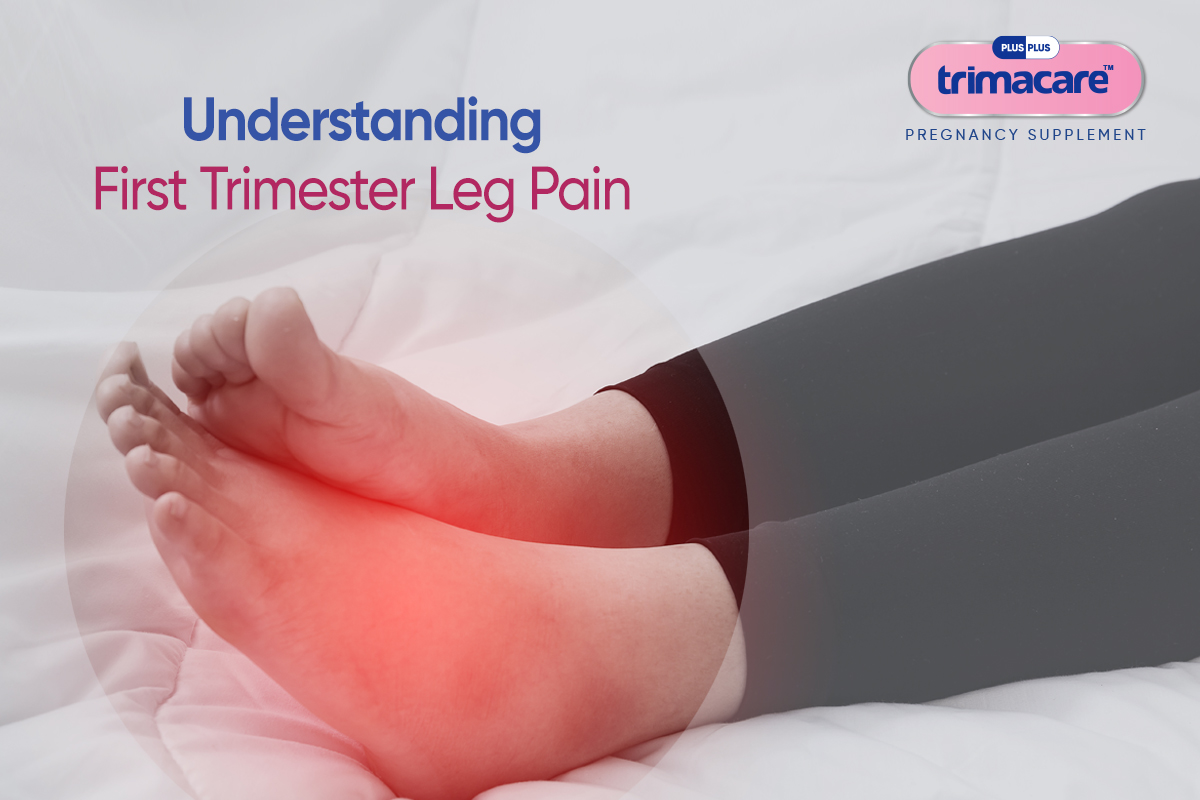Leg pain could be caused by carrying additional weight, not exercising as much, or not getting enough of a few vitamins. Leg cramps during pregnancy might be uncomfortable for a few seconds or minutes during pregnancy, but they usually don’t have any long-term consequences for either you or the unborn child. Experiencing right leg pain during pregnancy can be unsettling, but it’s not uncommon. There are several potential causes for leg cramps during pregnancy, and it’s essential to differentiate between normal discomfort and more serious issues.
Here are some common reasons for right leg pain during pregnancy and remedies …
Round Ligament Pain: This is one of the most common causes of abdominal and leg pain during pregnancy. The round ligaments, which support the uterus, stretch, and become more flexible to accommodate the growing baby. This can lead to sharp, shooting pains on one or both sides of the lower abdomen that may radiate to the groin or upper thigh. Rest, gentle stretching, and changing positions often help alleviate this discomfort.
Sciatica: Sciatica is a condition where the sciatic nerve, which runs from the lower back down the back of each leg, becomes irritated or compressed. In the buttocks and down the leg, this may result in pain, tingling, or numbness. Gentle stretching, warm compresses, and avoiding sitting or standing for prolonged periods may help.
Muscle Cramps: Leg cramps during pregnancy are common during pregnancy, especially at night. Ensure you’re staying hydrated, maintain proper nutrition, and consider gentle calf stretches before bed to prevent cramps.
Varicose Veins: Increased blood volume and pressure on the pelvic veins can lead to the development or worsening of varicose veins in the legs. Wearing compression stockings, elevating your legs when possible, and staying active can help alleviate discomfort.
DVT (Deep Vein Thrombosis): While less common, deep vein thrombosis is a serious condition in which a blood clot forms in a deep vein, usually in the legs. Symptoms include pain, swelling, warmth, and redness in the affected leg.
Injury or Overuse: Sometimes, right leg pain during pregnancy may result from unrelated causes, such as muscle strains, overexertion, or minor injuries. Rest, ice, compression, and elevation (RICE) can help with such issues.
PREVENTING LEG CRAMPS in PREGNANCY FIRST TRIMESTER
Leg pain during pregnancy is a common discomfort during pregnancy, particularly in the later stages, but there are several strategies you can try to prevent or reduce the frequency and severity of leg cramps:
- Stay Hydrated: Muscle cramps may be exacerbated by dehydration. Make sure you’re drinking plenty of water throughout the day to stay well-hydrated.
- Eat a Balanced Diet: Ensure you’re getting enough calcium, magnesium, and potassium in your diet, as deficiencies in these minerals can lead to muscle cramps. Foods rich in these nutrients include dairy products, leafy greens, bananas, and nuts.
- Stretch Regularly: Gentle stretching exercises can help prevent leg cramps during pregnancy. Try calf stretches by flexing your foot upward and pointing your toes downward. Doing this several times a day, especially before bed, can be beneficial.
- Wear Comfortable Shoes: Wearing shoes with proper arch support can help reduce the risk of leg cramps.
- Avoid Standing or Sitting for Prolonged Periods: If you have a job that requires long periods of standing or sitting, take breaks to move around and stretch your legs. Flex and point your toes periodically to keep your calf muscles engaged.
- Use Pregnancy Pillows: Placing a pillow under your legs while sleeping can help alleviate pressure on your calf muscles and reduce leg pain in pregnancy’s first trimester.
- Massage: Gentle leg massages can improve circulation and relax your muscles. You can do this yourself or ask your partner for help.
- Warm Baths: Taking a warm bath before bed can help relax your muscles and ease tension, reducing the risk of leg cramps during pregnancy.
- Stay Active: Engage in regular, moderate exercise approved by your doctor. Exercises like walking, swimming, and prenatal yoga can enhance blood flow and muscle performance.
- Consider Prenatal Vitamins: Prenatal pills are necessary supplements that contain vitamins and minerals that are required before and throughout pregnancy. Prenatal multivitamins contain all the essential nutrients that a woman should regularly take both before and throughout pregnancy.
TRIMACARE – India’s most preferred PRENATAL SUPPLEMENTS DURING PREGNANCY for curing Leg Cramps
In India, the Trimacare pregnancy multivitamin is the first prenatal multivitamin that offers a proprietary three-stage prenatal nutrition course that provides advanced nutrition during each trimester of pregnancy. Trimacare 1 women’s prenatal vitamin offers all these necessary nutrients in appropriate amounts to meet the demands of the first trimester, ensuring the baby’s optimum growth and development. One pill contains 20 plus nutrients, making it the only multivitamin for pregnancy you’ll ever need. These nutrients include folate, omega-3 fatty acids, vitamin B6, vitamin A, vitamin B12, iodine, vitamin D, iron, vitamin C, zinc, vitamin K, calcium, and magnesium. Since the Omega 3s are sourced from deep-sea algae, even vegetarians and vegans can consume it.
Always consult your doctor if you experience persistent or severe leg pain during pregnancy, specially if it is associated with other symptoms like swelling, redness, or fever. Leg pain during pregnancy is reduced by leading a healthy lifestyle, drinking plenty of water, and exercising safely and moderately.
Frequently Asked Questions:
1. Why do I experience right leg pain during the first trimester of pregnancy?
Right leg pain during the primary trimester of pregnancy can be ascribed to the tension applied on the sciatic nerve by the developing uterus, causing sciatica.
2. Is right leg pain common in the first trimester of pregnancy?
Yes, the changes in posture and increased pressure on the sciatic nerve during the first trimester of pregnancy are to blame for the relatively high prevalence of right leg pain.
3. How can I alleviate right leg pain during the first trimester of pregnancy?
You can try gentle stretching exercises, applying heat or cold packs to the affected area, practicing good posture, and avoiding standing or sitting for long periods of time to alleviate right leg pain during the first trimester of pregnancy.
4. When should I seek medical attention for right leg pain during the first trimester of pregnancy?
It is essential to see a doctor right away if you experience severe or persistent right leg pain during the first trimester, along with symptoms like weakness, numbness, or difficulty walking.
5. Can certain lifestyle changes help prevent or reduce right leg pain during the first trimester of pregnancy?
Yes, during the first trimester of pregnancy, you can help prevent or reduce right leg pain by changing certain aspects of your lifestyle, such as practicing proper posture, staying active with low-impact exercises that have been approved by your healthcare provider, and not wearing high heels or standing for long periods of time.













